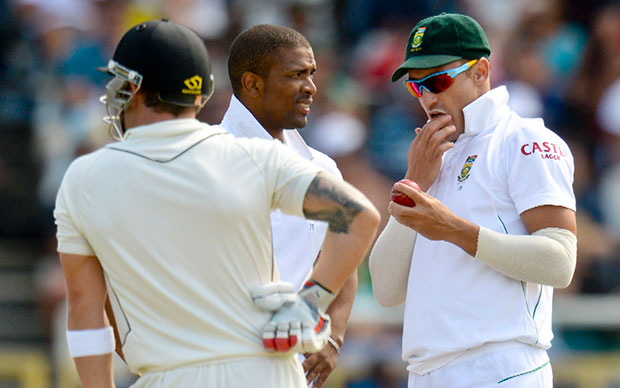The legality of ball-tampering is no longer a simple right or wrong issue, given the imbalance between bat and ball.
There’s been a lot of debate since Faf du Plessis was punished for ball-tampering during the second Test against Pakistan in October 2013.
It was a disappointing incident and I would agree Du Plessis was definitely in the wrong to alter the state of the ball. That being said, it may say something about the state of the game that fielding teams need to resort to such tactics to level out the contest between bat and ball.
Ball-tampering has been around for a long time, especially in Asian conditions where pitches provide bowlers with very little assistance. I remember teams working on the ball in Pakistan and India to give their bowlers that reverse-swing option. It was a necessary tactic, as they weren’t receiving much help from the playing surface.
It was prominent some 40 years ago when I was still playing the game and it was impossible to police. There was no television coverage in the 1960s and ’70s, and bowlers used to get away with murder. Nowadays, it isn’t as easy to alter the state of the ball as the media scrutiny is immense.
Current players will still look to bend the rules. Vaseline and sun cream are rubbed on to the ball, and you even hear stories of players sucking sweets and then using that saliva to alter the state of the ball. Other players pick at the seam to influence the way the ball impacts on the surface.
Perhaps it is something that needs to be looked at as, according to the law, these players are cheating. However, maybe it’s also time to look at how bowlers are at a significant disadvantage in today’s game.
Limited-overs games are becoming increasingly one-sided, with bigger bats and shorter boundaries in vogue. Then there are the limits placed on fielding teams during the powerplays. In the 2013 ODI series between Australia and India, totals in excess of 300 were chased down far too easily. It highlighted how the game is weighted in favour of the batsmen. Can we really blame bowlers and fielders for trying to find a way to balance the scales?
I must again reiterate that I don’t agree with what Du Plessis did in that Test match last October. I think South Africa knew they were in the wrong, but I also know they are not the only team that works to alter the state of the ball. It’s no excuse to say everybody is doing it, but perhaps the ICC needs to look at why everybody is doing it.
Perhaps the laws need to be changed to allow for some alterations to the condition of the ball that will in turn allow for a better contest between the bowler and batsman. I agree bowlers shouldn’t be allowed free rein to tamper with the condition of the ball, but I also feel something needs to be done to balance the scales. Perhaps minor adjustments are the answer. Until then, you will always see fielding teams resorting to these tactics to gain back some parity.
This column was first published in issue 123 of SA Cricket magazine.
Photo: Barry Aldworth/BackpagePix







